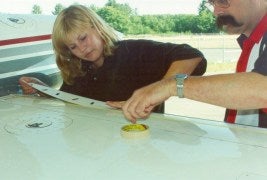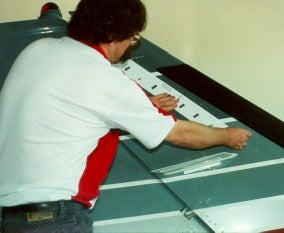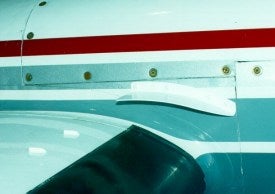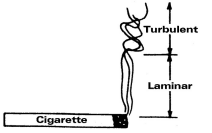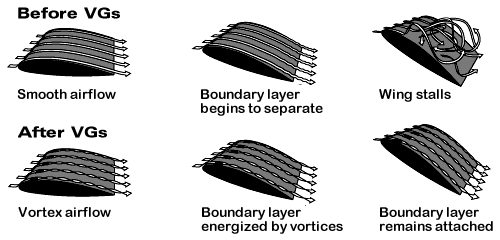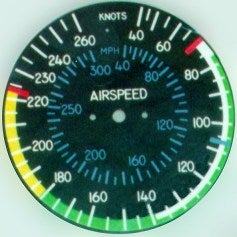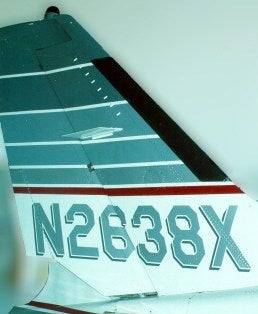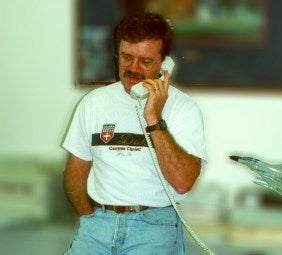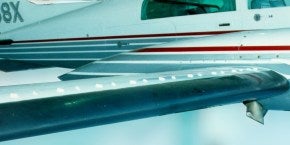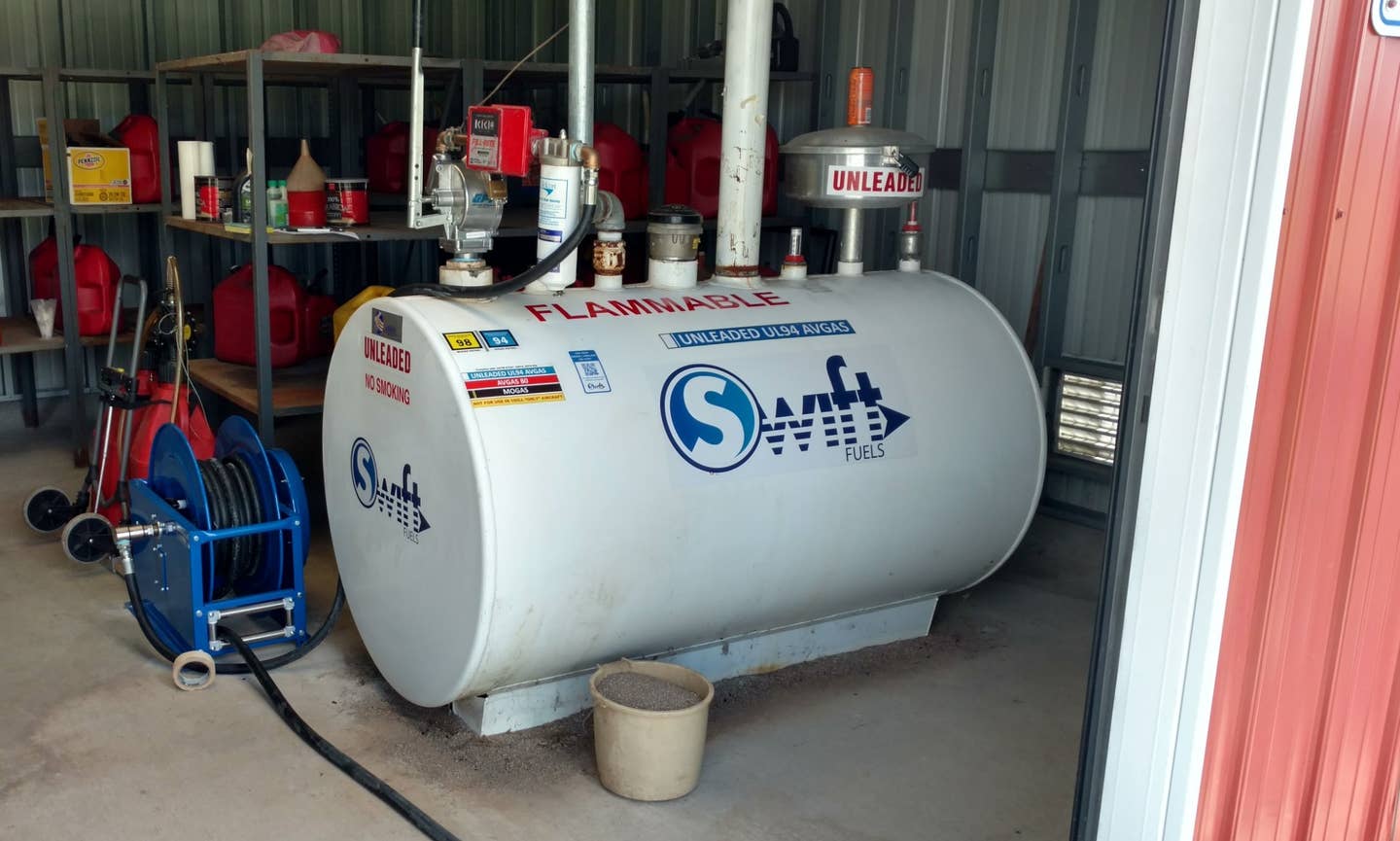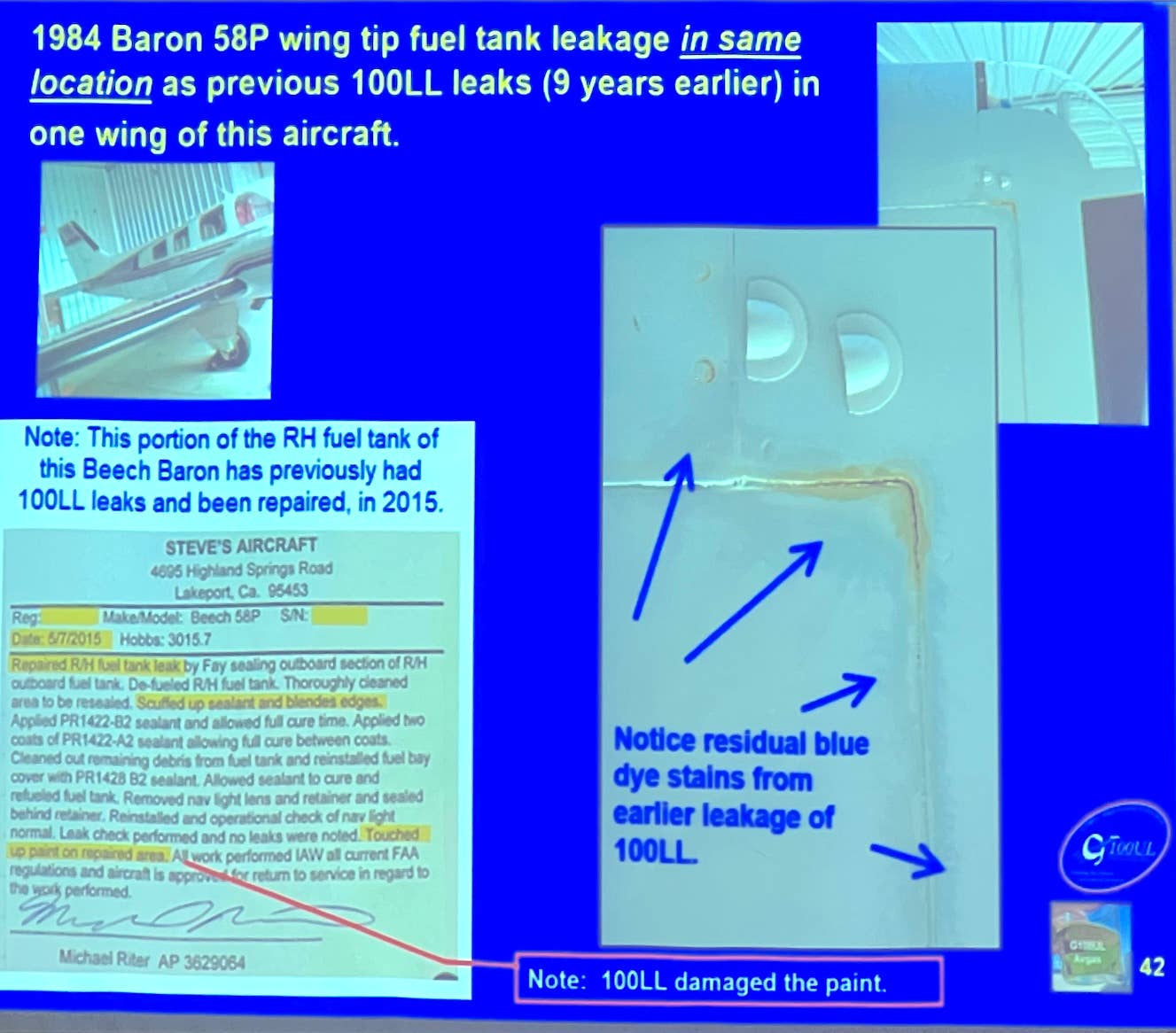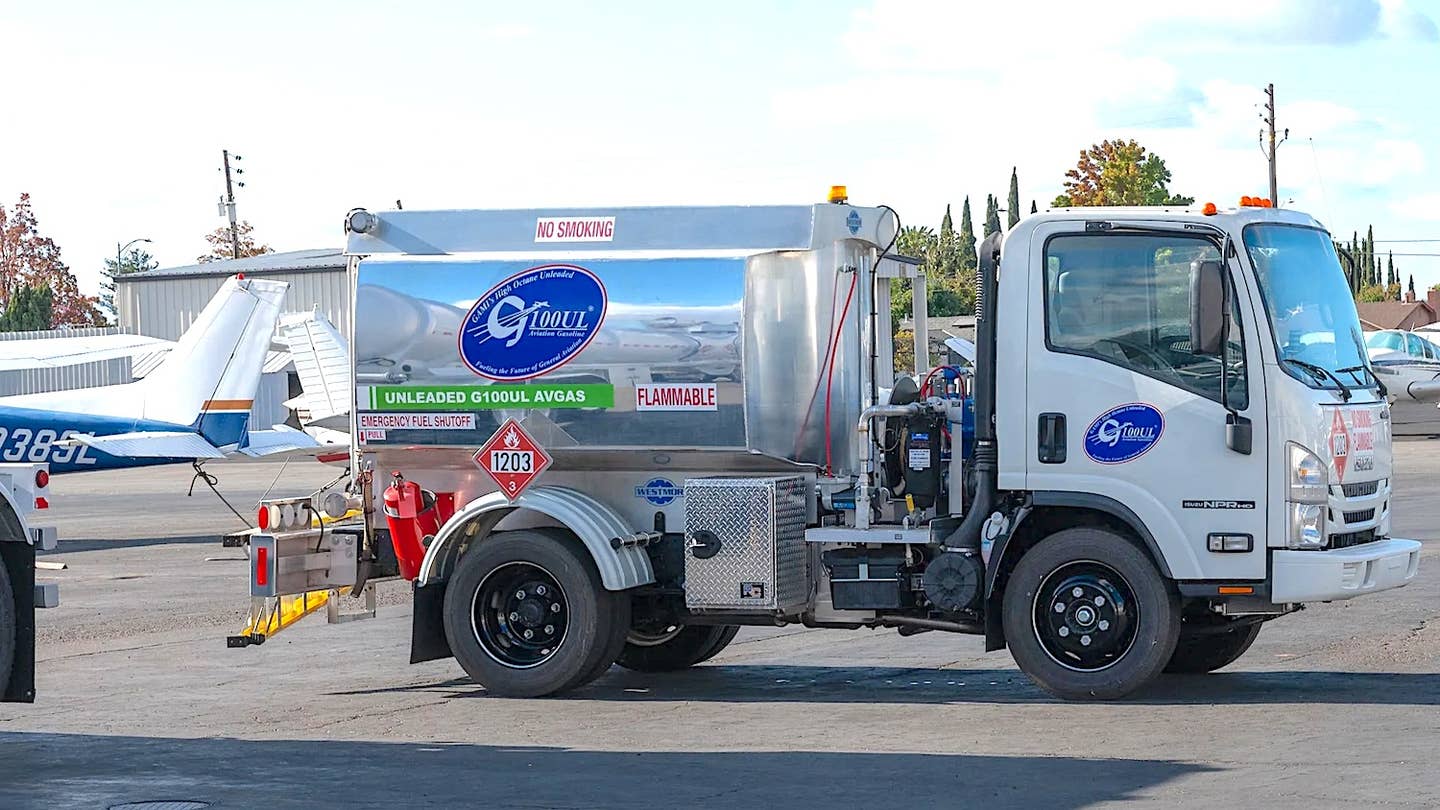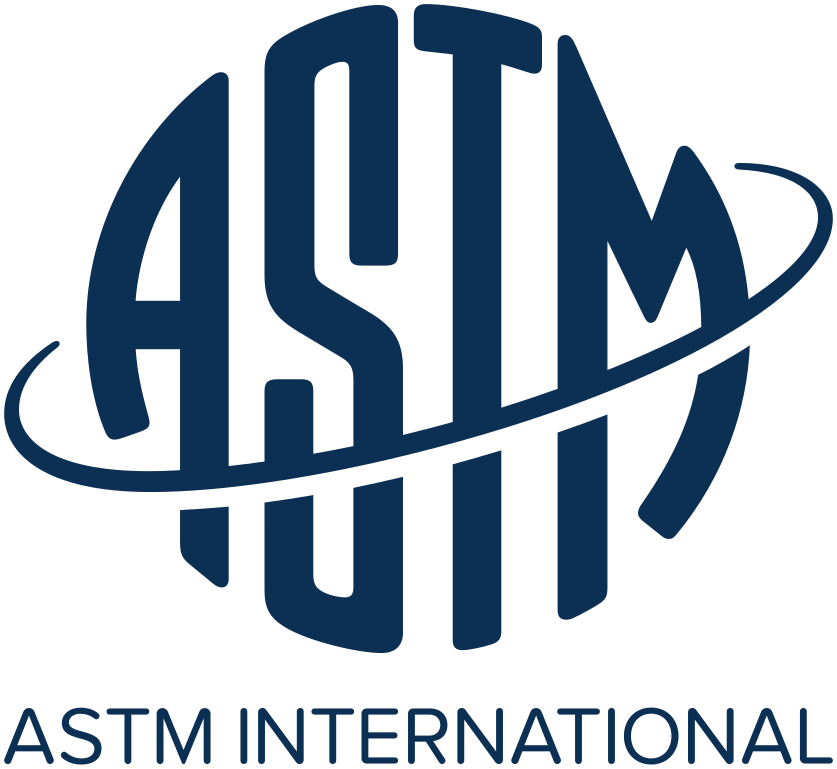Vortex Generators: Band-Aids or Magic?
Vortex generators have revolutionized the engine-out safety margins of twin-engine airplanes, and thousands of aircraft have been retrofitted with them over the last decade. But when AVweb’s editor-in-chief recently had VGs installed on his Cessna T310R, he discovered that they also improve short-field performance and low-speed handling to an extent that is hard to believe until you experience it. Not just for twins anymore, VGs are rapidly gaining popularity as an effective STOL modification to single-engine airplanes from Piper Cubs to Beech Bonanzas. This in-depth pilot report reviews the history of VGs, who offers them for which aircraft, why they work so well, how they’re installed, and what it’s like to fly with them.

 Nobody's ever accused me ofbeing an early-adopter when it comes to aviation. I'm unabashedly skeptical aboutaeronautical innovations until they've been proven in the field for years. When Mobil AV-1was being touted as the greatest thing since sliced bread, I stuck with my Aeroshell W100.When Cermicrome cylinders were all the rage, I stuck with nitrided steel jugs. (Both ofthose proved to be mighty good decisions, too.) Heck, I'll probably be the last on myblock to replace my old panel-mount LORAN with a GPS; I'm still holding off until they getWAAS figured out.
Nobody's ever accused me ofbeing an early-adopter when it comes to aviation. I'm unabashedly skeptical aboutaeronautical innovations until they've been proven in the field for years. When Mobil AV-1was being touted as the greatest thing since sliced bread, I stuck with my Aeroshell W100.When Cermicrome cylinders were all the rage, I stuck with nitrided steel jugs. (Both ofthose proved to be mighty good decisions, too.) Heck, I'll probably be the last on myblock to replace my old panel-mount LORAN with a GPS; I'm still holding off until they getWAAS figured out.
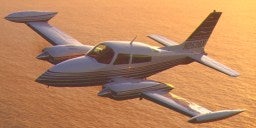 But the easily-visible fact that my T310R still wasn'tVG equipped was starting to get downright embarrassing. The lack of those little bumps onmy wings and vertical tail were starting to make me feel as conspicuous as I did a decadeago when Detroit introduced high-mounted stop lights and my car seemed like the only oneon the road that didn't have one!
But the easily-visible fact that my T310R still wasn'tVG equipped was starting to get downright embarrassing. The lack of those little bumps onmy wings and vertical tail were starting to make me feel as conspicuous as I did a decadeago when Detroit introduced high-mounted stop lights and my car seemed like the only oneon the road that didn't have one!
Even the most dyed-in-the-wool skeptics were unanimous that vortex generators are amajor advance in piston twin safety, lowering Vmc by ten knots or so to the point that itis no longer a factor (because it is below stall speed). And as if that wasn't enough, Ilearned that some of the VG kits offered substantial gross weight increases andsignificantly slower approach and takeoff speeds.
It was time.
How It All Began
|
The use of vortex generators is nothing new. First used in England, VGs have been usedon transport jets for decades, and on bizjets since Bill Lear invented them. Buthistorically they were used as an aerodynamic "band-aid" to deal with localizedmach buffet problems at the high end of the airspeed envelope. MacDonnell Douglasengineers would routinely scoff at the VGs on Boeing jets and brag, "see, we don'tneed those things because we got our aerodynamics right in the first place."
The idea of using VGs to improve the low-speed performance of general aviation aircraftcame from an ex-Boeing engineer named Paul Robertson. Robertson first tried out his VGidea on a Cessna 206, but while the VGs did lower the stall speed, it degraded the plane'spreviously docile stall characteristics, so the project was shelved.
Robertson's next VG experiment involved a D-55 Baron that belonged to hispartner Mike Anderson. The Baron was famous for having a rather nasty stallcharacteristics on one engine, but Robertson discovered that the VGs turned the airplaneinto a pussycat and lowered Vmc a full ten knots to the point that it was below stall.
Convinced that VGs had great promise to make piston twins safer, Robertson started anew company called Friday International (located in Friday Harbor, Washington)together with partners Mike Anderson and Chuck White. In 1987, the company managed tosecure the first STC for a VG kit on the Beech Barons. They also put VGs on an A36 Bonanzabut never got far along enough with that project to get an STC.
Turbulence In The Industry
Beginning around 1990, the story of the VG kit business started sounding like a passagefrom the Old Testament. Disagreements between the partners caused Robertson and White toleave Friday International and, together with their engineering test pilot Bob Desroche,form a new firm called Micro Aerodynamics inAnacortes, Washington. This company went on to obtain STC approval for VG kits fornumerous piston twins including the Baron 55 and 58, Twin Bonanza, Cessna 310-320-340 and402-414-421, and Piper Aztec. More recently, the company has obtained STCs for VG kits formost of the rag-wing strut-braced Piper singles (Cub, Super Cub, Super Cruiser, PacerandTri-Pacer) and the Maules.
Meantime, Friday International changed its name to VG Systems and obtainedadditional STCs for VG kits on the Cessna 340 and 421B. VG Systems was acquired in 1993 byBeryl D'Shannon (of Bonanza mod fame),who moved the operation to Minnesota and completed the work started by FridayInternational to obtain STCs for VG kits for the Bonanza A36 and F33.
RAM Aircraft in Waco also decided toget into the act about the same time. Many customers were asking RAM to install MicroAerodynamics VG kits on their Cessna 300 and 400 series twins while the airplanes were inWaco being fitted with RAM engines. Concluding it would be better to keep the moneyin-house, RAM obtained its own VG STCs for the Cessna 340/340A, 402C, 414/414A, 421C and425.
About the same time, back at Anacortes, both Paul Robertson and Bob Desroche decided todepart Micro Aerodynamics to start new aircraft modification companies. Robertson founded AeronauticalTesting Services and proceeded to obtain VG kit STCs for most of the Cessna 300/400twins and the Piper Seneca, and also for the Cessna 120/140, 180/185 and deHavillandBeaver. Meanwhile, Desroche formed BoundaryLayer Research and obtained VG STCs for the Beech Duke, the Piper Navajo,Chieftain and Panther, and also for the Super Cub. Ultimately, in 1997, Robertson andDesroche decided to combine their VG businesses and Boundary Layer Research acquiredrights to all of Robertson's VG STCs.
In case you lost count a few paragraphs back (entirely understandable!), this leavesfour surviving players in the VG kit business: BerylD'Shannon, Boundary Layer Research,Micro Aerodynamics, and RAM Aircraft. D'Shannon offers VGs only forBarons and Bonanzas, RAM offers kits only for Cessna twins, while both BLR and MA offerSTC'd kits for a wide variety of aircraft.
VG Kits: Who Offers What?
The table below summarizes the various aircraft models for which each of these firmsoffers VG kits:
Beryl D'Shannon | Boundary Layer Reserach | Micro Aerodynamics | RAM Aircraft |
| BEECH Bonanza 33, 35, 36, 36TC Baron 55, 58, 58TC, 58P | BEECH Duke 60, A60, B60 CESSNA 120/140 Skywagon 180, 185 310, 310A-R, T310P-R 320D-F 335, 340, 340A 401, 401A, 401B 402, 402A, 402B, 402C 414, 414A 421, 421A, 421B, 421C 441 (Conquest II) PIPER Navajo PA31-310, 325C/R Colemill Panther I & II Chieftan PA31-350, T1020 Seneca II/III/IV PA34 Super Cruiser PA12, PA14 Super Cub PA18 deHAVILLAND Beaver Mk I AGPLANES Ayres Thrush, Air Tractor, Cessna 188 AgWagon, Piper PA36 Brave, Dromader, Weatherly | BEECH Twin Bonanza 50 Baron 55, 58 CESSNA 310G-R,T310R, 320 335, 340, 340A 414, 414A 402B, 402C 421C PIPER Aztec PA23 Cub J-3, PA11 Super Cruiser PA12 Super Cub PA18 Pacer PA20 Tri-Pacer PA22 MAULE M-4, M-5, M-7, MX-7 AGPLANES Ayres Thrush | CESSNA 340, 340A 402C 414, 414A 414AW, 414AW-V 421C, 421CW 425 (Conquest I) |
Which VG Kit to Pick?
You might think that one VG kit is pretty much like another, but that often turns outnot to be the case. Of course, if you're flying an Aztec, Bonanza, Duke, Maule or Cessna120/140/180/185, you don't have any choice because there's only one STC available for yourairplane (as you can see in the table above). But if you're flying a Baron, twin Cessna orSuper Cub, you have two or three choices and some comparison shopping is in order.
When it came time for me to decide which company to select to put bumps on my T310R,the choice turned out to be pretty easy. Three of the four VG firms offer STC'd kits fortwin Cessnas. RAM's VG kit price ($2,150) is the lowest of the three companies, but noneof RAM's VG kits offer any gross weight increase - undoubtedly because RAM's principalbusiness is selling increased horsepower engines, and a big selling point of those enginesis that they offer more useful load. I also discovered that while RAM offers VGs for mostof the twin Cessnas, they don't presently have an STC for the 310 or T310. So I crossedRAM off my list.
That left Boundary Layer Researchand Micro Aerodynamics, both of whom offer VG kitsfor the T310R (and for most other twin Cessna models as well). Both kits looked good, andboth offered comparable gross weight increases. But BLR's was priced $500 less ($2,450 vs.$2,950) and offered slightly better numbers than MA's. The clincher was that the BLR STCincreased the Zero Fuel Weight of the T310R by 385 pounds (effectively eliminating ZFW)while the MA STC offered no ZFW increase. I concluded that Boundary Layer Research's STC for theT310R was both less expensive and better (at least on paper), and I decided to go thatroute.
Rather than order the kit and install it myself, I decided to fly the airplane up toEverett, Washington, and have BLR do the installation. Although the VG installation issimple enough (one might even go so far as to call it idiot-proof) and can be easily donein one day, going up to Everett would give me the chance to learn how these little bumpsdo their aerodynamic magic, and to do a little flying with the master, BLR presidentBob Desroche, who undoubtedly has more test-pilottime certifying VGs on light twins than any man on earth.
I'd also been looking for an excuse to fly up to Everett's Paine Field (PAE) becausethat's where Boeing builds its widebodies (747, 767,777) and I've long wanted to take a tour of that facility. So I made an appointment withBLR for the first week in August (while everyone else was off at Oshkosh) and had aglorious flight from SMX to PAE in an easy four hours.
BLR Rolls Out The Welcome Mat
Monday morning at 0800, I taxied the airplane to Hangar C-75 where Boundary Layer Research makes its home.I was greeted by BLR's office manager Jean Wieser and introduced to BLR founder andpresident Bob Desroche. Bob in turn introduced meto Jay Falatko, BLR's resident FAA-Designated Engineering Representative (DER) and aformer Boeing aerodynamicist, and to Dale Lundgren who would be assisting Jay with theinstallation of my VG kit.
|
BLR's spotless hangar contained Bob's Beech Duke which was in the process of beingfitted with prototypes of BLR's new wet wingtips (aux tanks), and a Super Cub belonging toBob's wife Monika that bristled with an eye-catching menagerie of VGs and body strakes.(Monika is an accomplished pilot and vice-president of BLR.) Bob and Jay pulled Monika'sSuper Cub out of the hangar and pushed in my Cessna 310. Within minutes, Jay, Dale andJean were busily at work on my VG installation.
Installing The VG Kit
My VG kit included about 90 one-inch-long vortex generator tabs machined from atee-shaped aluminum extrusion and prepainted to match the airplane's primary paint color- white Imron in my case. VGs located over trim stripes may be painted with touch uppaint after installation, if desired, although the five-color paint scheme on my 310 is socomplex that I'll probably just leave my VGs white.
|
Positioning the VGs correctly is important, but the kit makes that easy by providing acomplete set of peel-and-stick templates with little rectangular cutouts where each VG isto go. In many cases, such as the vertical stabilizer and stub wings on my 310, thetemplates are positioned along a nearby skin lap. In the case of the outboard wing sectionof the 310, no convenient skin lap exists so a string is pulled taut between two referencepoints and the template is aligned with the string.
Once the templates are in position, it's simply a matter of roughening the paint ateach VG location with a Scotchbrite pad (or a chisel in the case of the 310's wing-walkarea), and then gluing the VG tab in place using the provided two-part adhesive (Loctite330).
Most of the twin kits also come with a pair of nacelle strakes that act like large VGsfor the wing-to-nacelle interface. Another peel-and-stick template is used to locatemounting holes that are drilled in the sides of the nacelles. The strakes are then simplybolted in place.
|
The BLR kit also comes with a re-marked dial face for the airspeed indicator, andinstalling that turned out to be the only difficult part of the job. Unfortunately, myairplane came equipped with a "true airspeed" indicator that has a longnon-detachable capillary tube connecting the instrument to an air temperature probe on thebelly of the aircraft, and it's almost impossible to remove this instrument from theaircraft without destroying the capillary tube. (I'd love to get my hands on the yo-yo whocame up with that design!) So a technician from the local instrument shop had to come overto open up the instrument in the aircraft, install the new dial, and recheck theinstrument calibration. That turned out to be a two-hour job.
How VGs Work
With the installation well underway, I asked Bob Desroche and Jay Falatko if they couldexplain to me the theory behind how vortex generators reduce stall speeds and Vmc. Whatensued was a cram course in Aerodynamics 101 which I found illuminating and fascinating.
VGs are boundary layer control devices, so it isn't surprising that tounderstand how they work you first need to know something about the boundary layer. I'dcertainly heard the term before, but never really understood its significance. Bob and Jaywere glad to fill me in, and here's what I learned.
When an airplane is in flight, we usually think in terms of air passing over the top ofthe wing at the airspeed of the aircraft. But it turns out that the viscosity of the airand the friction of the wing surface cause the air molecules in contact with the wing toadhere to its surface and therefore have zero velocity. Air molecules slightly fartheraway from the wing surface will be slowed due to friction with the zero-velocity moleculesbut won't be completely stopped. As we move still farther away from the wing surface, theair molecules will be slowed less and less, until at some distance from the surface apoint is reached where the air molecules are not slowed at all. The layer of air fromthe surface of the wing to the point where there is no measurable slowing of the air isknown as the boundary layer.
|
|
|
Near the leading edge of the wing, the boundary layer is very thin, and the airmolecules in it move smoothly and parallel to the wing surface. This is known as laminarflow. But as the airflow progresses aft from the leading edge, the boundary layerbecomes progressively thicker and more unstable, and transitions to turbulent flowin which intermixing of faster and slower air molecules starts to take place. (Anothereasily-seen example of laminar and turbulent flow can be seen by watching the smoke risefrom a lighted cigarette in a draft-free room.)
It turns out that laminar flow is a good-news/bad-news situation. The good news is thatlaminar flow provides greatly reduced drag compared to turbulent flow. The bad news isthat laminar flow permits the boundary layer to separate easily from the wing surface athigh angles of attack. That's why so-called "laminar flow airfoils" (which aredesigned to move the transition to turbulent flow further aft) tend to provide low drag atcruise but nasty stall characteristics.
Turbulent flow in the boundary layer produces more drag, but is much more resistant toseparation (and therefore to stalling). However, even in areas of turbulent flow, theretends to be a thin sub-layer of laminar flow in the immediate vicinity of the wing surfacewhich becomes increasingly slow-moving and stagnant toward the trailing edge of the wing.It is this "aerodynamically dead" sub-layer that allows airflow to separate andthe wing to stall.
|
|
If we could find a way to energize this sublayer, flow separation would be supressedand the onset of stall delayed. This is precisely what vortex generators do. Each VGcreates a pencil-thin tornado-like cone of swirling air that stimulates and organizes theturbulent flow of the boundary layer on the aft portion of the wing. The swirl of thevortices pull fast-moving air down through the boundary layer into close proximity to thewing surface, energizing the previously-dead air there. The result is a wing that can flyat significantly higher angles of attack before the onset of boundary layer separation,and can therefore achieve a significantly higher maximum lift coefficient.
When mounted on the wings, VGs reduce stall speed and increase climb capability. Whenmounted on the vertical tail, they increase rudder effectiveness and lower Vmc.
Gross Weight Increases
The performance improvements resulting from the VG installation on my T310R are shownbelow:
|
Original |
With VGs |
Difference |
|
| Ramp Weight |
5535 |
5720 |
+185 |
| Gross Takeoff Weight |
5500 |
5684 |
+184 |
| Zero Fuel Weight |
5015 |
5400 |
+385 |
| Landing Weight |
5400 |
5400 |
No Change |
| Minimum Control (Vmc) |
80 |
70 |
-10 |
| Stall, Clean (Vs) |
79 |
75 |
-4 |
| Stall, Dirty (Vso) |
72 |
69 |
-3 |
| Liftoff Speed (Vlof) |
85 |
75 |
-10 |
| Approach Speed (Vref) |
94 |
87 |
-7 |
While the numbers mostly speak for themselves, a few explanations are probably inorder.
The gross weight increase offered by the VG STC is a direct result of the reduction install speed. Under the FARs, light twins are required to have an engine-out rate-of-climb(in feet/minute) equal to .027 times the square of Vso (in knots). If you lower Vso by afew knots, the required single-engine ROC goes down. At the same time, the VGs actuallyincrease single-engine ROC by increasing the maximum lift coefficient of the wings at highangles-of-attack. Thus, the aircraft now has more single-engine climb performance than theregs require. The solution: increase the gross weight!
Landing weight is a different story. It has structural implications, not justaerodynamic ones. For an STC to obtain a landing weight increase would involve a landinggear beef-up and a series of very costly "drop tests" to prove that the aircraftcould handle the additional weight without structural damage. BLR actually did this forthe Piper Chieftain, but it required strut modifications and new torque links, and wasquite expensive. It's therefore understandable why none of the twin Cessna VG STCs offer alanding weight increase.
So if you take off at the new higher maximum takeoff weight, better plan on flying farenough to burn of a few hundred pounds of fuel…or land gently and don't tell anyone!
Of course, there's no law that says you must use the gross weight increase.Another huge benefit of VGs on twins is that if the airplane is flown at its original(pre-increase) max takeoff weight, the VGs provide a big improvement in engine-out climbperformance - so much so that it is often possible (if the density altitude isn't toohigh) to actually FLY a VG-equipped light twin when an engine fails shortly aftertakeoff, rather than automatically having to throttle back and put the airplane downoff-airport. Naturally, if you load the airplane up to its increased maximum takeoffweight, single-engine climb will be just as anemic as it was before...although with theVGs you still have a much better chance of keeping the airplane under control.
Zero fuel weight only comes into play when you want to carry a maximum payload for ashort distance. For example, on a stock T310R with a 3900 pound empty weight, it says thatof the 1600 lbs of useful load, no more than 1115 lbs may be passengers and cargo; therest must be fuel. By increasing the ZFW to 5400 lbs (same as landing weight), the VG kiteffectively makes ZFW disappear, because if you loaded the aircraft to ZFW you'd have toland on fumes (or overweight)!
Reduced Airspeeds: Vso, Vmc, Vref, Vlof
|
The most significant airspeed change resulting from the VG installation is the virtualelimination of Vmc. Technically, Vmc still exists, but at 70 knots loss of control occursat a lower airspeed than the airplane will fly unless it's extraordinarily light.
Bob Desroche told me a funny story from his early VG days with Paul Robertson when theywere getting the original Cessna 340 STC. Since Vmc is predicated on failure of thecritical (left) engine, Robertson originally applied VGs only to the left side of the340's vertical stabilizer. Les Berven of the Seattle FSDO did those original certificationflights, and after numerous left engine cuts, he was bubbling over about the reduction ofVmc. Then Les tried something totally unexpected: he cut the right engine, and discovered(to everyone's astonishment) that Vmc occurred at a higher airspeed…the right enginehad become critical! Needless to say, Robertson quickly added VGs to the right side of thevertical tail and re-flew the tests!
|
While the reduction in Vmc gets all the glory, the 10-knot reduction in liftoff speedand 7-knot reduction in approach speed makes a big difference in everyday flying. TwinCessnas are not especially good short-field airplanes, so these improvements areespecially welcome.
If you've been paying close attention, you might have noticed an apparent discrepancyin the airspeed figures in Table 2. How can approach speed (Vref) be reduced by 7 knotswhen the dirty stall speed (Vso) has been reduced by only 3 knots? After all, Vref is bydefinition 1.3 times Vso. I had the same question, and the answer is straightforward: thepublished Vso is certified at maximum takeoff weight (5684 lbs with the VGs), while Vrefis based on maximum landing weight (5400 lbs) at which Vso is lower. Naturally, at lighterweights, approach speeds should be even less than the published 87 knot Vref.
So What's the Downside of VGs?
Okay, I thought, this all makes sense. But I still had the feeling that there must besome downside. After all, my daddy always taught me that there's no such thing as a freelunch. For instance, those 90 VGs stick up into the airflow and must produce some drag,right? Won't that slow the airplane down at cruise?
|
Bob Desroche explained that while the VGs doproduce some drag, they also reduce drag by reducing the thickness of the boundary layeron the aft portion of the wing. The net result is about a "push" with nomeasurable degradation in cruise speed.
Here's where proper placement of VGs is critical, Jay chimed in. If they're placed toofar forward, they'll hasten the transition from laminar to turbulent flow and thereforeincrease drag. On the other hand, if they're placed too far aft, their effectiveness willbe compromised. The trick is to mount the VGs right at the boundary layer's transitionzone from laminar to turbulent flow.
How about icing, I asked? Won't the VGs pick up ice?
Not unless they're tall enough to poke up through the boundary layer, Bob replied.That's one reason why the VGs are sized to a height of about 80% of the boundary layerthickness. The VGs have been tested extensively in icing conditions during FAAcertification, and do not pick up ice except possibly when flying in freezing rain orsupercooled drizzle drops - conditions in which no portion of the airframe is completelyimmune from icing.
Another question that has come up frequently is whether the addition of vortexgenerators has an adverse effect on Design Maneuvering Speed (Va). Since the VG kitreduces stall speeds, it would seem to follow that Va should also be reduced. Lookingthrough the POH supplement that accompanied my new VG kit, I did not see anything about anamended Va, and I asked Bob why. Bob said it was a good question, and that there werereally two quite distinct answers: a regulatory answer and an aerodynamic answer.
From a certification standpoint, he explained, there is no requirement for thepublished Va speed to be revised downward after the installation of a VG kit. Theregulation that requires the publication of Va for Part 23 aircraft (specifically, FAR23.335 "Design Airspeeds") states in part "...Va may not be less thanVs*SQRT(n)..." where Vs is the flaps-up stall speed at max gross weight and n is thedesign limit load factor (typically 3.8 G's for a Normal Category aircraft). Thus, whilethe reduced Vs provided for by VGs would permit Va to be reduced accordingly, the FARs donot require such a reduction and BLR has chosen instead to substantiate theaircraft structure to the originally published Va.
From an aerodynamic standpoint, Bob explained that Va is a speed that is poorlyunderstood by many pilots. Most of have been taught to use Va as a turbulence penetrationspeed. But Va is not a manufacturer-recommended turbulence penetration speed, andin fact there is no requirement that a turbulence penetration speed be published for Part23 aircraft. (The situation is different for Part 25 aircraft like bizjets.) Unless youplan to do snap rolls or other abrupt-control-deflection maneuvers, Va is a figure thathas little relevance to everyday flying.
Va is a purely theoretical figure that represents the maximum speed at whichabrupt control deflection will not stress the aircraft beyond its designed load limit. ButVa is not a speed determined from flight test, is not verified during FAA certification,and is never required to be demonstrated by the manufacturer. Bob pointed out that if youattempted to verify Va by intentionally stalling the aircraft at Va at the design loadlimit of the airframe, you'd have to enter the maneuver at an airspeed significantlyhigher than Va, then perform an abrupt pull-up or accelerated stall that wouldproduce load-limit G-forces and reduce the airspeed to Va precisely at the point where theairplane stalled.
Va as published in the POH is a computed figure based on maximum aircraft weight. Atlower weights, Vs is lower and therefore Va is also lower. The aerodynamic effect of VGson manuvering speed is substantially identical to the effect of flying at less thanmaximum weight.
Why Are VG Kits So Pricey?
While I had Bob's ear, I figured I might as well go for broke and ask him the $2,500question: why do VG kits cost so much when the materials cost is clearly not very great?Of course, I already knew the answer - it costs a lot to get the FAA to certify thesethings - but Bob gave me some details that helped put things into true perspective.
He said that it can easily cost between $250,000 and $500,000 to get a VG kitcertified. Why so much? In essence, the FAA requires that almost all of the airplane'soriginal flight testing be repeated. For instance, for twins that were certificated forknown-icing (i.e., most of them), the icing tests have to be reflown (which means findingsufficiently bad natural icing condition, flying behind a spray plane, or gluing styrofoam"shapes" to the unbooted areas of the aircraft to simulate ice). For singles,the spin tests have to be reflown (which means fitting the aircraft with a spin chute andwater ballast).
To make matters worse, the market for most of these costly-to-get STCs is depressinglysmall. BLR's first VG STC was for the Beech Duke, of which only about 500 are flying. Youmight think the situation would be a lot better with more popular models like the Cessna310, but you'd be wrong. Separate STCs (and flight tests) are required for the "tunatank" models, the narrow-chord aileron models, wide-chord aileron models, thelong-nose R-model, and the turbocharged models. So the market for each of those STCs isstill pretty small. To make matters worse, the popular models like Barons and Twin Cessnashave two or three companies competing for the limited market.
It's a tough business. Work the numbers. I think I'll stick to writing.
Enough Talk...Lets Go Flying!
With the VGs installed, the airspeed dial changed, and the logbooks and 337 formssigned, it was time to go flying. Bob likes to go up with new VG customers for 45 minutesor so to give them a checkout in their new-and-improved airplane before turning themloose. It didn't take long for me to see why.
We taxied out to PAE's 9000-foot main runway, did our runup, and Bob briefed me for thetakeoff. "I want you to rotate at 75 knots - the new Vmc plus five - and climb topattern altitude at 85 knots…no faster." Bob warned me that this would feel atfirst like an unnatural act.
He was right…it took all the faith and backpressure I could muster, and theairplane (with three people aboard) broke ground early and climbed at an awesome deckangle with the VSI nailed at 2,000 FPM. Thirty seconds later, we were at pattern altitudeand hadn't even crossed the departure end of the runway yet.
Bob directed me to a practice area over Puget Sound and had me fly a series of steepturns, slow flight exercises, and stalls. I found the airplane rock solid at indicatedairspeeds so low that they'd have freaked me out before. We flew a series of low-speedmaneuvers with the stall warning horn blaring continuously, yet roll and pitch controlremained crisp and responsive.
|
Then we did a series of stalls, with and without power, clean and dirty, level andturning. It was really interesting: as the airplane eventually approached a stall (withindicated airspeeds down in the 60s), it would start buffeting like a bucking bronco, yetwith no loss of altitude. Bob explained that this was the airflow separating over the stubwings (between the fuselage and nacelles), but that the nacelle strakes created a largevortex that acts like a stall fence and prevents the stall from propagating outboard ofthe nacelles. All I know is that even with the stall warning horn disconeected and theairspeed indicator covered up, you'd still have to be comatose to get the airplane into anunintentional stall.
We were running out of time, so we decided to skip the Vmc demonstration and head backto PAE for a couple of landings. I made my approaches at 85 knots indicated (7 knotsslower than the 92 Vref I was accustomed to using) and found that I was still arriving atthe flare with too much energy and floating a bit much. We agreed I would have to spendsome time on my own nibbling at the edge of the envelope to determine what short-fieldapproach speed would work best.
Creature of Habit
During the weeks following the VG installation, I made a point of trying ever slowerover-the-fence speeds on landing to get a feel for the new slow-speed characteristics ofthe airplane. I found this surprisingly unnerving - after a decade of landing thisairplane with indicated airspeeds in the low 90s (not to mention some rather"firm" touchdowns when I let the airspeed decay into the high 80s), it took afair amount of courage to fly a final approach at speeds in the low 80s and high 70s.Despite the numbers in the POH supplement that came with BLR's VG kit, and despite myall-to-short checkout in Everett, it just felt wrong flying the airplane that slow. Myhead kept telling me that it was okay, but my gut kept saying "are you sure your hullinsurance is paid up?"
As a CFI, I know that this is a common problem with pilots who add STOL kits to theirairplanes. The STOL kit doesn't improve the airplane's short-field performance unless thepilot can teach himself to fly slower approaches. That often takes a surprising amount oftime and self-discipline, because we're all creatures of habit to whom change doesn't comeeasy.
After flying a number of approaches "by the book" at various weights, I foundthat I invariably had more than enough speed at the flare and would float more than Ireally wanted. On a couple of occasions, I'd do a full-dirty power-off stall just prior tolanding to establish what Vso actually was at my landing weight, then would multiply thatIAS by 1.3 and use it for my landing Vref speed. What I discovered was that actual Vso wasinvariably considerably lower than the book figure, and the same held true of landingspeeds. I called Bob Desroche and asked him about this. Bob explained that the bookfigures that BLR provides are extremely conservative, and are based on worst-caseconditions (like full-forward CG) that are seldom encountered in actual flight.
In any event, it's now obvious to me that it's going to take me awhile longerbefore I feel really comfortable flying my VG-equipped airplane as slow as it reallyshould be flown. At the same time, I already have vastly greater confidence in my abilityto operate the T310R out of short fields than I did before.
VG Kits for Singles
Before leaving Everett for the flight home, I asked Bob what new projects he saw comingup for BLR, he told me that the company was focusing increasingly on VG kits forsingle-engine airplanes. While the VG market for twins has become quite mature over thepast decade, the surface has just barely been scratched when it comes to singles.
For instance, BLR secured an STC to install VGs on the Cessna 180 and 185 Skywagons,and the results were quite impressive. For the Cessna 180, Vso was reduced by 8-10 knots(depending on CG), and low-speed handling was significantly improved.
Bob thinks that similar results could be achieved on the Cessna 182, and expects thatBLR will start working on the STC for the Skylane in a few months. At this point, Bob ison the lookout for a few 182 owners who'd be willing to make their airplanes available forVG certification work. (He'll need both straight-tail and swept-tail airplanes, with andwithout leading-edge cuffs.) If you're a 182 owner and think you might be interested, dropBob Desroche an e-note at
BLR also has obtained approval for VG kits for a variety of other single-engineaircraft, including the Cessna 120/140, the Piper Super Cub and Super Cruiser, thedeHavilland Beaver, and a bunch of ag-planes. I predict this is only the beginning...afterseeing first-hand what VGs did for the low-speed handling and short-field performance ofmy machine, I can see VG kits becoming the STOL modification of choice on all sorts ofairplanes.
|
Editor's Note: Charles White, president of Micro Aerodynamics, informed us of several corrections to this article. His note is published in our AVmail for June 12, 2003. Kevin Lane-Cummings
Features and AVmail Editor |
||


